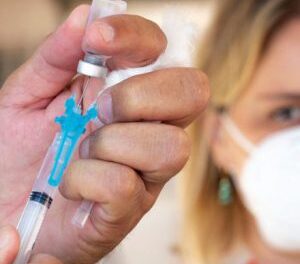A recent study published in the Journal of the American Medical Association (JAMA) reveals a significant decrease in the death rate from cardiac arrest during marathons, despite a surge in participation. The research, conducted by Jonathan Kim, associate professor at Emory School of Medicine, shows that while the incidence of cardiac arrest remains relatively stable, the survival rate has doubled in recent years.
The study analyzed marathon data from 2010 to 2023, a period during which over 29 million people completed marathons in the U.S., tripling the number from the previous decade. Kim’s research, a follow-up to his 2012 study, found that the rate of cardiac arrest remained relatively constant, at approximately 0.60 per 100,000 participants, compared to 0.54 per 100,000 in the earlier period. However, the death rate plummeted from 0.39 per 100,000 to 0.19 per 100,000, representing a 50% decline.
“We continue to see media reports about unfortunate cases of cardiac arrest during long-distance running events,” Kim stated. “But, has the incidence of these events changed? Have there been changes in the most common causes of cardiac arrest? What are the factors associated with death and survival? It was a novel question to ask 13 years after our first analysis, and an important one because recreational running continues to increase in popularity.”
The study highlights that cardiac arrests are still more prevalent among men and in full marathons compared to half marathons. The researchers attributed the improved survival rates to increased awareness of cardiac risks within the running community and the widespread availability of emergency services.
“What we found was that every one of those people got hands-on cardiopulmonary resuscitation, but the vast majority also had immediate access to an automated external defibrillator. That’s the difference,” Kim explained.
The study emphasizes the importance of CPR training for participants and the strategic placement of automated external defibrillators (AEDs) along racecourses. It also calls for better identification of individuals with underlying cardiovascular risk factors before they participate in races.
“These are more often potentially preventable events,” Kim said. “Being able to identify people, more commonly older individuals with unrecognized cardiovascular risk factors, doesn’t mean they can’t run a race. Rather, it affords the opportunity to improve primary preventive cardiovascular care and potentially further reduce the risk of cardiac arrest during these events.”
Kim also mentioned, “The incidence of sudden cardiac arrest during long-distance races hasn’t changed in over 20 years. I think this is an important arena of future research.”
Disclaimer: This news article is based on the provided study and should not be taken as medical advice. Individuals with concerns about their health should consult with a healthcare professional.(
More information: Cardiac Arrest During Long-Distance Running Races, JAMA (2025). DOI: 10.1001/jama.2025.3026












